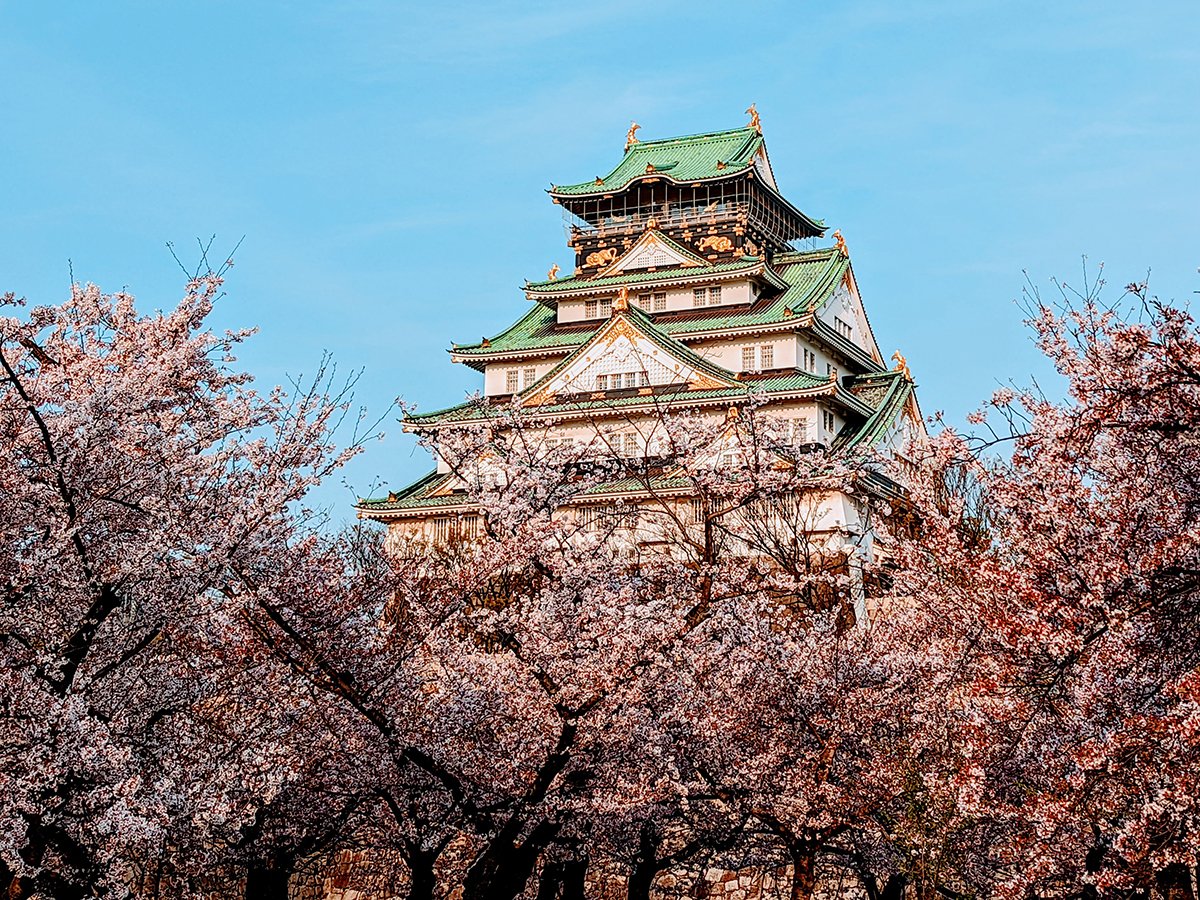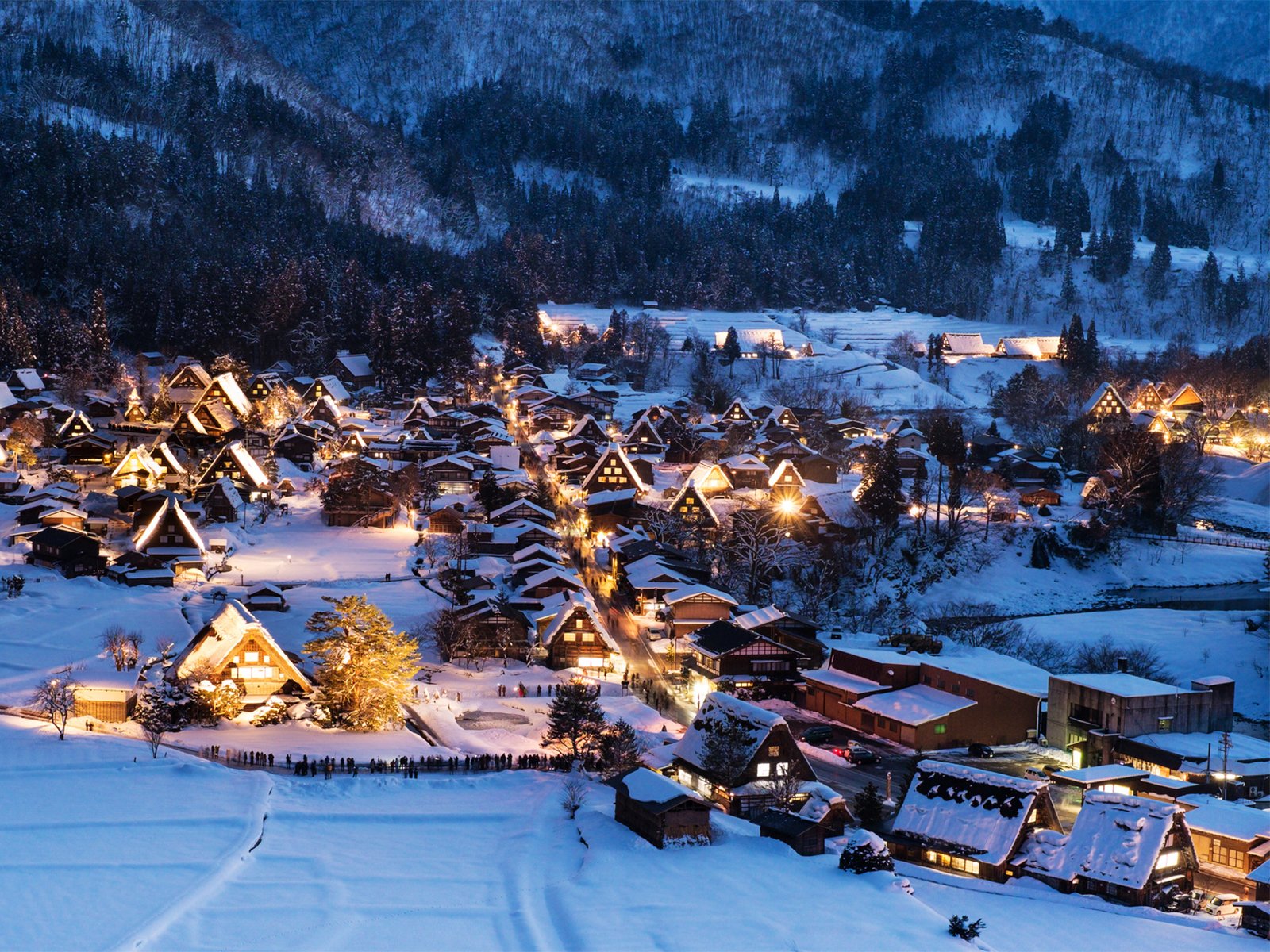Death and Beauty: The Fleeting Sakura Season

Cherry blossoms are vital to understanding Japanese history and culture.
Cover photo: Locals enjoy hanami and a stroll around the sakura trees of Osaka Castle Park, Osaka City, Osaka Prefecture, Japan (2022). Photo by Danny With Love.
Intro
Every year, for a blissful month or so, the nation of Japan is transformed into a magical sea of pink and white. Sakura, or cherry blossoms, begin to bloom mid-late March, first in the warmer south, then spreading north.
The blooming of sakura denotes the arrival of spring. Once a crucial indicator for rice planting, today the flowers announce the start of the new academic and fiscal year. Locals and foreigners alike eagerly await the sakura season, closely following weather patterns and bloom forecasts.
While cherry trees can be enjoyed in public spaces for free, the season is commercialized with an assortment of limited-time products offered by multi-national companies like McDonald’s and Starbucks, as well as local businesses.
Prior to COVID-19, sakura season had attracted an estimated 8.5 million foreign tourists, generating 650 billion yen ($6 billion) per year. But behind their beautiful appearance, cherry blossoms hide a dark history and sorrowful philosophy.
WARNING: The article includes topics of climate change, war, suicide, and death.
Flower Viewing
People celebrate with the centuries-old tradition of hanami or flower viewing. Families, friends, classmates, and even coworkers gather together for picnics to enjoy the sight of the beautiful blossoms.
In 2020, as pandemic restrictions dampened celebrations, Tokyo Governor Yuriko Koike acknowledged that preventing Japanese people from enjoying the blossoms was akin to “taking hugs away from Italians.”
The practice was started around the 9th century by Emperor Saga of the Heian period who invited guests to feast under blooming sakura at the Imperial Court of Kyoto. Over the following centuries, hanami spread among the aristocracy, the samurai class, and was finally popularized among commoners by the Edo period (1603-1867).
Guide
Today, people spread out on tarps and blankets, enjoying picnics with bento (boxed-meals) and maybe a beer, as drinking alcohol in public is legal across the country. Various locations host spring festivals, with dedicated street-food stalls and special performances. Some areas even offer boat rides!
As the flowers of a single tree last no longer than one week, night illuminations are a popular way to enjoy the flowers, a practice called yozakura. It can get quite chilly at night, so it’s best to bring a jacket!
While enjoying this special season, it’s important to be respectful of others, as well as the sakura trees. Be prepared to take your trash home, and don’t stay in popular spots longer than a few hours.
While taking your Insta-bae (Insta-worthy) shots, avoid touching the trees, such as standing or sitting on the shallow roots, and especially avoid handling the fragile branches.
I was quite surprised and dismayed to watch several people shake sakura branches to let loose a flurry of petals. Aside from possibly damaging the tree, of course, this leaves less blossoms for everyone else to appreciate.
The Philosophy of Ephemeral Beauty
Why are sakura so cherished? These cherry trees are classified as members of the plant family Rosaceae, closely related to roses. Unlike roses, sakura shed their petals at peak bloom. They scatter in the wind and are replaced by green leaves.
Sakura thus exemplify the Japanese concept of mono-no-aware, an appreciation of the “transience of the material world” which encourages “savoring life more deeply.” Mono-no-aware can be translated literally as “the wretchedness of things,” a bittersweet lamentation that evokes intense feelings of joy, pleasure, and sadness.
Coined by the 18th century classical scholar Motoori Norinaga — in his own words — in effort to “define an essential ingredient of Japanese culture”, Mono-no-aware is rooted in the Buddhist concept of impermanence as well as Shinto ideals of sympathy for one’s environment.
The anticipation of loss is a fundamental aspect of mono-no-aware. ‘Art writer’ C.B. Liddell describes the concept as an “appreciation of things in the shadow of their future absence.”
“The blossoms give pleasure but also arouse feelings of pathos because their beauty will last only a few days,” explains author Yoji Yamakuse. The knowledge that their existence is temporary amplifies the experience. The fleeting nature of sakura is a potent reminder of our own mortality.
Nationalism
Sakura literally translates to a generic “bloomlings” but the word is synonymous with cherry blossoms. It is possibly derived from the Shinto flower goddess Konohana Sakuya-hime, known as Sakuya, who is the principle deity of Mount Fuji. Scenes of the famous mountain framed by sakura are an icon of national pride as cherry blossoms are considered the unofficial flower of Japan.
Many sakura trees were planted during Japan’s imperial era, both in the mainland and in overseas territories as monuments to colonial conquest. This is because in the late 19th century cherry blossoms became associated with the souls of soldiers. As sakura trees can survive hundreds of years, many standing today were likely planted to inspire and commemorate the soldiers of Imperial Japan.
The philosopher Inoue Tetsujiro argued that while a single rose merits appreciation, a cherry blossom alone “is so inconsequential that it is unworthy of being viewed.”
“A branch of blossoms as a collectivity is superior to the individual blossoms, a tree of blossoms … is superior to a branch … and a mountain of blossoms … is superior to a tree,” explained Tetsujiro. He considered this a reflection of the Japanese people themselves, who value community over the individual.
During World War II, the Japanese military had adopted the symbol of sakura to encourage drafted young men — specifically tokkotai (kamikaze) suicide bomber pilots — to make the ultimate sacrifice.
In her book Kamikaze, Cherry Blossoms, and Nationalisms, anthropologist Emiko Ohnuki-Tierney writes that the state embraced the aesthetics of sakura to transform “idealistic desire into service for imperial nationalism.”
“A single cherry blossom was painted in pink on a white background on both sides of the tokkotai airplane, while various Japanese terms for cherry blossoms were used for the names of the corps,” notes Ohnuki-Tierney. Planes in the Ohka series were specifically designed for novice pilots, allowing an inexperienced recruit to serve as a “human-guided missile”.
Sakura epitomized the romantic ideal of a noble death. “We weren’t destined to live long,” writes surviving pilot Kazuo Odachi, in his book Memoirs of a Kamikaze. Ohnuki-Tierney argues the young pilots were unaware that they “were being coopted through ideological manipulation.”
Another pilot wrote to his parents, “Please congratulate me. I have been given a splendid opportunity to die. This is my last day. The destiny of our homeland hinges on the decisive battle in the sea to the south where I shall fall like a blossom from a radiant cherry tree.”
Ultimately, while in battle against the United States, some 5,000 kamikaze pilots would give their lives.
The Japanese Ministry of Communications controlled the content of radio programs, mostly filled with gunka (military marches). Meant to inspire patriotic fervor, these songs were also promoted in school textbooks and often sung by children during assemblies and physical training.
In 1942, navy cadet Josa Yutaka altered and popularized a song written by composer Saijo Yaso just a few years prior, retitled as Doki no Sakura, “Cherry Blossom Classmates.” The song emphasizes the fraternal bond between cadets, in service of the emperor.
Hidemichi Tanaka, Professor Emeritus at Tohoku University, recalls that while the song was first used among the naval academy, it spread throughout the military until it was “sung everywhere.”
Lyrics include, “You and I are two cherry blossoms. We bloom on the branch of the same squad.” And, “Let us fall magnificently for the country.” In death, the classmates will reunite at Yasukuni Shrine.
I asked my fellow junior high school teachers in Fukui City about the song; they explained that while younger people tend to be unfamiliar with Doki no Sakura, it remains popular with Japan’s elderly population.
According to one teacher with experience in music therapy, seniors who otherwise refuse to speak are compelled to sing upon hearing the wartime anthem. Nevertheless, the dark history of sakura appears largely forgotten, and the cherry trees completely depoliticized.
Unnatural Nature
During a trip to Osaka, I happened to meet a local writer by the name of Hideo Asano, who loudly complained about the “fake” sakura trees, noting their identical flowers and inedible fruit.
Indeed, the popular Somei-Yoshino cultivar is a graft hybrid. Essentially, each tree is a clone, engineered to reproduce the same petite cream-colored flowers, which accounts for their synchronized blooming period.
Though over 400 species and varieties of sakura trees are in existence, the Somei-Yoshino cultivar accounts for over 90% of Japan’s cherry trees. Yoshino is preferred because it is easy to propagate and can start to blossom in just five years but they are vulnerable to infection and temperature change.
This monoculture puts the survival of sakura at risk. As increased urbanization and climate change have raised temperatures across Japan, blooming periods have been trending earlier, a disruption that could impact entire ecosystems.
“We have to prevent that, and we can prevent that,” Abe argues. “We have to start thinking differently and start thinking that the Yoshino cherries are not the only cherries.” Not only is biodiversity key to sakura resilience, but it can expand the aesthetic experience of the season.
“I want to help recreate the old times when people enjoyed a wide variety,” explains Hideaki Tanaka, a sakura expert and manager of a cherry tree farm in Yuki operated by the Flower Association of Japan, a nonprofit organization which promotes, grows, and donates alternatives to the Yoshino-Somei cultivar.
We must appreciate every blossom and work to preserve hanami for future generations.
“A lovely spring night
suddenly vanished while we
viewed cherry blossoms”














